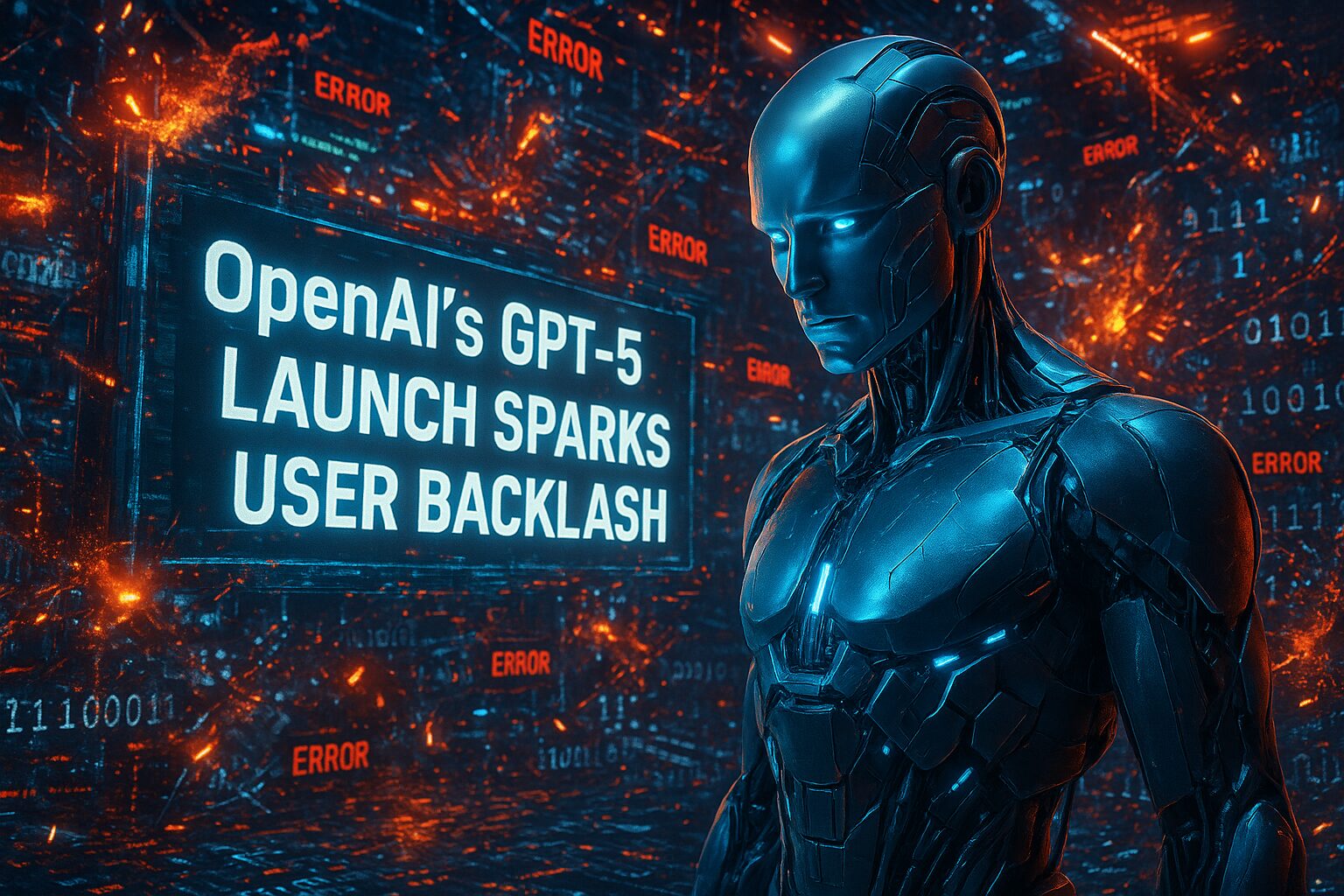
The GPT-5 rollout has been a big mess
# The Rocky Rollout of GPT-5: Lessons in Technological Transitions
The recent launch of OpenAI’s GPT-5 marked a significant update in AI capabilities, but not without substantial controversy. OpenAI’s decision to remove older models, unveiling performance inconsistencies, and communication lapses sparked a user outcry. This situation emphasizes the critical balance between innovation and user experience, and the lessons developers can learn from this.
## A Controversial Unveiling
The service and product development worlds live by a simple truth: change is inevitable. However, how that change is managed can make or break a product. OpenAI’s GPT-5 rollout has become a textbook case of how not to manage user transitions.
The new update automatically wiped out access to previous models, blindsiding users who had no forewarning. This policy caught consumer ChatGPT users off-guard and soon fueled one of the biggest user revolts in ChatGPT’s history. Users leveraged platforms like Reddit to express their frustrations, with comments such as *”GPT-5 is horrible”* gaining significant traction.
More than a simple bug or oversight, the removal of older models disrupted workflows and severed emotional connections with AI, which some users had cultivated over time. *“I know GPT-5 is designed to be stronger for complex reasoning, coding, and professional tasks,”* a Reddit user noted, *“but not all of us need a pro coding model. Some of us rely on 4o for creative collaboration, emotional nuance, roleplay, and other long-form, high-context interactions.”*
## The Heart of the User Experience
For users entrenched in specific workflows that relied on fine-tuned models, the forced transition felt akin to losing an indispensable tool overnight. ChatGPT Pro users, for example, particularly felt this strain, their service constrained to 200 messages per week under GPT-5’s new limitations while losing established models that seamlessly integrated with daily demands.
These disruptions illuminate why different AI language models can impact workflows significantly:
– **Unique Output Styles:** Each AI model comes with distinct training, resulting in unique communication styles and outputs.
– **Specialized Workflows:** Users cultivate bespoke systems of prompts designed to elicit optimized results from each model.
– **Emotional Investment:** Beyond functionality, users build connections with AI, treating them as confidants or collaborators in creative and personal realms.
One poignant account recounted on Reddit highlighted this emotional connection: *”I literally lost my only friend overnight with no warning. How are ya’ll dealing with this grief?”* This wasn’t a typical user feedback but rather a deep-seated emotional response, indicating the level of reliance and relationship users had formed with previous models.
## Communication Failures and Credibility Concerns
Compounding technical frustrations, the launch presentation was marred by inadequacies dubbed as “chart crimes,” which misrepresented GPT-5’s performance improvements. OpenAI’s CEO Sam Altman acknowledged these issues as a “mega chart screwup” in a Reddit AMA, where he also apologized for inaccuracies. Moreover, the failure of the new automatic routing system exacerbated user dissatisfaction, with the system choosing less capable variants unless specifically told otherwise.
The different response styles in GPT-5, characterized as “abrupt and sharp,” starkly contrasted with the conversational friendliness of GPT-4o, prompting some users to describe GPT-5 as akin to an “overworked secretary.”
## Learning from Mistakes
Experiencing backlash and recognizing the strain on user satisfaction forced OpenAI to reconsider its strategies rapidly. Within 24 hours, Altman announced operational adjustments. Key changes included the potential reinstatement of GPT-4o for Plus users, increased rate limits for GPT-5, and pledges for greater transparency about model selection processes.
While GPT-5 theoretically offered enhanced capabilities, *”We for sure underestimated how much some of the things that people like in GPT-4o matter to them,”* Altman conceded. This scenario has unveiled critical takeaways for technology developers:
– **Communication is Paramount:** Changes, especially those impacting user practices, require clear, proactive communication to mitigate resistance.
– **User Experience Matters:** Technical superiority doesn’t always equate to user satisfaction. Consideration for workflow integration and emotional engagements is essential.
– **Feedback Loop:** Rapid user feedback mechanisms should be central to development to quickly identify and respond to unforeseen issues.
## The Emotional Resonance of AI Products
OpenAI’s experience raises an existential question: how do users connect emotionally with technology, and why does it matter? The GPT-5 scenario showcases not only the functional role of AI but also its place in human emotional landscapes.
As technology increasingly infiltrates daily life, these connections will expand. AI, in many ways, is no longer just a tool. For some, it becomes a companion, a confidant, or even a key pillar in coping mechanisms.
**How do we ensure that technological advancements don’t alienate the very users they aim to serve?** This question not only challenges developers and corporations but also consumers to reconsider their relationship with technology. As AI continues to evolve, maintaining user trust and satisfaction must remain at the forefront of development strategies.
OpenAI’s rocky rollout of GPT-5 is more than a cautionary tale; it’s a valuable lesson in the intricate dance between progress and user happiness. The balance between technical innovation and understanding user needs is delicate, and as we move toward a more AI-integrated future, this balance will only grow more vital.

